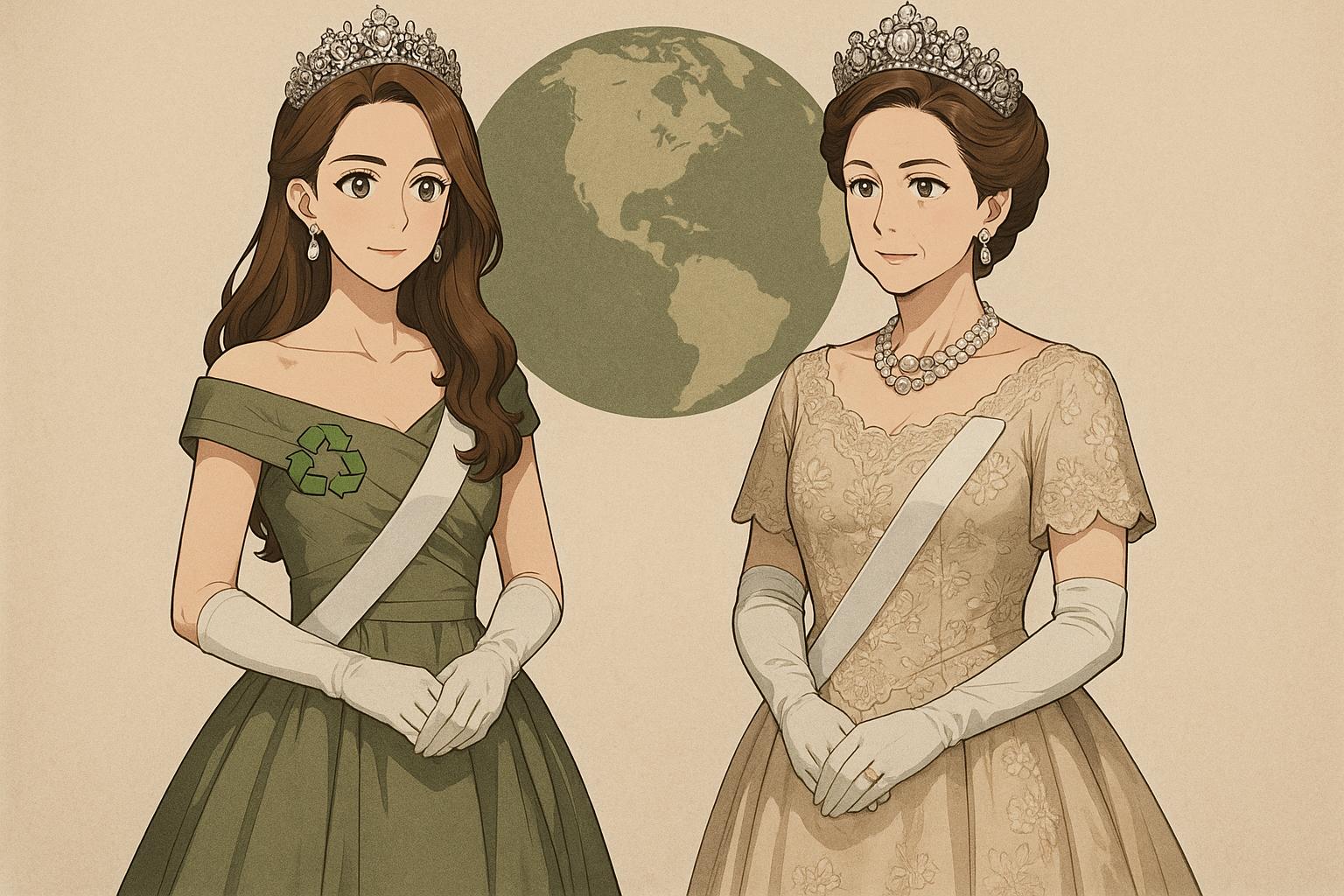Princess Kate and Queen Mary of Denmark have garnered considerable acclaim for their stylish appearances as modern royalty. Their fashion choices have often set trends, and both women have been pivotal figures in the evolving landscape of royal style. Recently, however, a noticeable shift has emerged as both royals increasingly adopt the practice of recycling outfits, reflecting broader societal trends towards sustainability and conscious consumption.
In the past, the notion of a royal re-wearing the same outfit was almost frowned upon; however, this year marks a significant change in attitude. Both Princess Kate and Queen Mary, recognising the importance of circular fashion, are embracing the idea that previously worn garments can be stylish and appropriate for public engagements. In this environmentally aware era, the repetition of outfits has shifted from a potential scandal to a celebrated practice.
The momentum for this change in fashion ethos may have been catalysed by a statement from Kensington Palace earlier this year, announcing a pivot in focus for Princess Kate. The Palace indicated that they would no longer routinely divulge details about her outfits, suggesting a desire to emphasise her charitable work over her wardrobe choices. A source close to the Palace stated, “There is an absolute feeling that it is not about what the princess is wearing. She wants the focus to be on the really important issues, the people and the causes she is spotlighting.” This desire to prioritise substance over style likely resonates with Queen Mary, who has also been noted for her commitment to sustainable fashion.
In 2025, Princess Kate has been seen re-wearing several cherished pieces from her wardrobe, including a bright yellow Emilia Wickstead dress worn at a royal garden tea party, also seen during Queen Elizabeth II's Platinum Jubilee in 2022. Reports indicate that within just a year, she has repeated outfits in 12 out of 18 public appearances. Such choices are seen not only as environmentally friendly but as a strategic move to shift public attention towards her charitable initiatives rather than her fashion statements.
Queen Mary of Denmark, known for her elegant style, has mirrored this approach. During a recent UN Chief Executives dinner, she wore a previously beloved Erdem dress, also sported during a visit from the Norwegian royals. This decision to recycle outfits speaks volumes about her approach to royal engagements, particularly as she and King Frederik X embrace their responsibilities in promoting environmental awareness. For instance, her choice to re-wear a blue Julie Fagerholt gown at a high-profile New Year event underscores a shift away from precursory expectations of new formal attire.
Both royals continue to curtail the conventional expectation of always donning new garments, choosing instead to highlight the significance of sustainability in their sartorial decisions. This practice not only reinforces their commitment to eco-consciousness but also allows them to divert the focus away from their outfits to the pressing issues they represent. Queen Mary herself has been vocal about sustainability, stating at the Global Fashion Summit that “Our planet is beautiful and fragile and we have a responsibility to protect and preserve it for our children and coming generations.”
In contributing to the discussion around sustainability in fashion, both Princess Kate and Queen Mary demonstrate a significant evolution within royal circles, where personal style meets environmental responsibility. Their choices can be seen as championing a narrative that prioritises the messages behind their royal duties over mere fashion statements, allowing their garments to serve as a backdrop to their commitments and legacies.
As the world continues to grapple with environmental challenges, the influence of royals like Kate and Mary in promoting sustainable fashion practices may pave the way for a new generation of royal style that emphasises responsibility and mindfulness over extravagance. This evolution not only reflects changing societal norms but also highlights the potential impact of royalty on public consciousness regarding sustainability.
📌 Reference Map:
- Paragraph 1 – [1], [2]
- Paragraph 2 – [1], [5]
- Paragraph 3 – [6], [3]
- Paragraph 4 – [1], [4]
- Paragraph 5 – [1], [7]
- Paragraph 6 – [1], [3]
Source: Noah Wire Services
